Benny Lewis's Blog, page 55
December 17, 2018
Spread the Holiday Cheer! 33 Holiday Foods, Decorations and Greetings from Around the World

Wherever you’re from, there’s a good chance that food, getting together with family, and spreading the holiday cheer are things that give you joy.
For some it’s heading out to the local Christmas market and indulging in seasonal treats like mulled wine and baked goods. For others, it’s traveling back to your parents to reconnect with family and spend time with those who matter most.
Regardless of how you spend the holidays, here are 33 traditions, foods, decorations and Christmas words from around the world to help you celebrate the season.
7 Holiday Food Words from Around the World
No matter where you are in the world, food and holidays go together! So much so, in fact, that we even wrote about 16 different holiday food traditions from across the globe. There are a few more that deserve an honorable mention!
Spanguolių Kisielius (“Cranberry Kissel”) from Lithuania
Kissel, or Spanguolių Kisielius in Lithuanian, falls somewhere between a dessert and a drink. It’s jelly-like in substance and is made from thickened cranberry juice. It’s served as a part of Kūčios, the traditional Lithuanian Christmas dinner. The dinner features twelve different dishes, eaten on Christmas Eve!
If you’d like to try your hand at making Spanguolių Kisielius from scratch, here’s a simple recipe.
דמי חנוכה (“Gelt Chocolate”) from Various Countries
דמי חנוכה or “gelt chocolate” are small chocolate coins that are given to children during Hanukkah festivities. The meaning is literally “Hanukkah money” because for many centuries, real money was given. It was only in the 20th century that chocolate makers picked up on the tradition and developed a chocolate version of “gelt”. In the 1920’s, these chocolates were wrapped in silver and gold foil, then tucked into pouches designed to resemble money bags. While the first chocolate gelt was produced in the US, the largest manufacturers today are based in the Netherlands and Israel.
Want to try your hand at making gelt from scratch? Here’s a recipe to change things up from plain chocolate.
Der Glühwein (“Mulled Wine”) from Germany
Der Glühwein roughly translates as “glowing wine” and is a traditional drink during the holidays in both Germany and Alsace. Typically made with mulling spices such as cinnamon sticks, cloves, star aniseed, and vanilla pods, as well as with citrus and sugar, and of course, the main ingredient - wine. Der Glühwein is sometimes drunk mit Schuss. That means a shot of hard liquor is added. For those who prefer not to drink alcohol or for those who aren’t of the legal drinking age, Kinderpunsch is an option. It’s a punch made with similar spices but no alcohol.

Here’s a recipe for the adults only version of the drink and another for the kid-friendly edition.
クリスマスケーキ (Kurisumasukēki, “Christmas cake”) from Japan
Did you know that the cake emoji
December 14, 2018
Merry Christmas in Spanish: All the Spanish Holiday Vocab You Need for a “Feliz Navidad”

Well, here’s all the answers you ever wanted to know about holidays in Spanish!
Besides Christmas Day itself, there are other holidays celebrated in Spanish-speaking countries over the winter. Some of these are even bigger than Christmas Day, and overall the winter festivities last about a month. These other holidays often focus on holy feast days from 8th December to 6th January. That said, Christmas Day has become more popular to celebrate,
So besides learning about Christmas in Spanish and all the holiday vocabulary you need, let's learn about the unique holiday traditions from around the Spanish-speaking world. Felices vacaciones! (“Happy Holidays!”)
“Merry Christmas” in Spanish
How do you say “Merry Christmas” in Spanish? You may recognize it from the popular tune - Feliz Navidad . In English, feliz translates as “happy” and navidad means “nativity”. So, it actually means “Happy Christmas” or “Happy Nativity”.
For Christmas Eve, you say Nochebuena. It actually means “the Good Night”, and it’s the day most big celebrations happen in Spain, like the dinner feast with family and Midnight Mass. Families often stay up all night during Nochebuena celebrating together and opening gifts after the midnight mass. The traditional Christmas flower, the Poinsettia, is also called Flor de Nochebuena (“The flower of the Good Night”).
“Happy New Year” in Spanish
You can wish someone a “Happy New Year” by saying Feliz año nuevo. This is a literal translation, with feliz meaning “happy”, año meaning “year”, and nuevo meaning “new”. In Spanish, the adjective comes after the noun it describes, so it’s “Happy Year New”.
But, you can also wish someone a “prosperous new year” as well. You can say ¡Feliz Navidad y Próspero Año Nuevo! to wish someone “Merry Christmas and Happy New Year” in Spanish. A lot of New Year traditions welcome in prosperity for the new year, so Próspero Año Nuevo is commonly used.
For New Year's Eve, you say Nochevieja. It actually translates as “old night”, because it’s the last day of the old year. There are a lot of superstitions about starting the new year completely new and fresh. Many people make sure they've cleaned their homes, and wear all new clothes. This way, nothing from the old year comes with them into the new. Some people believe this is important to ward off bad luck.
50+ More Spanish Words and Phrases for the Christmas Season
So how do you talk about Christmas in Spanish? How do you say you “wish” for a particular gift, or talk about decorating the Christmas tree? How do you tell someone to countdown to midnight, and talk about your New Year’s Resolution? Here are all the words you need to talk about the holidays in Spanish.
Christmas Spanish Vocabulary
To wish - Desear
Angel - Ángel
To decorate - Decorar
Christmas tree - Árbol de Navidad
Winter - Invierno
Snow - Nieve
Sleigh bells - Campanas de trineo
Presents - Presenta
Mistletoe - Muérdago
Reindeer - Reno
Santa Claus- Papá Noel
Candy cane - Bastón de caramelo
Christmas card - Tarjeta de Navidad
Snowman - Muñeco de nieve
Celebrate - Celebrar
Jingle bells - Resuenan las campanas
Chimney - Chimenea
Eggnog - Ponche de huevo
Candles - Velas
Elf - Elfo
Ornament - Adorno
Family - Familia
Star - Estrella
Fireplace - Hogar
Chestnuts - Castañas
Carols - Villancicos
Gingerbread man / Gingerbread house - Hombre de pan de jengibre / Casa de jengibre
Holiday - Vacaciones
Hot chocolate - Chocolate caliente
Jolly - Alegre
Christmas lights - Luces de Navidad
Naughty - Travieso
Nice - Agradable
Goodwill - Buena voluntad
Nutcracker - Cascanueces
Stocking - Calcetín navideño
Tinsel - Oropel
Good tidings - Buenas nuevas
Wrapping paper - Papel de regalo
December 25 - Vienticinco de diciembre
New Year’s Spanish Vocabulary
Twelve o’clock - Doce
Countdown - Cuenta regresiva
New Year’s resolution - Resolución de Año Nuevo
Balloons - Globos
Confetti - Papel picado
Midnight - Medianoche
Grapes - Uvas
Champagne - Champán
Fireworks - Fuegoes artificiales
Midnight kiss - Beso de medianoche
Clock - Reloj
Ring in the New Year - Anillo en el año nuevo
Calendar - Calendario
Tradition - Tradicion
January 1st - Primero de enero
Spanish Christmas and Winter Holiday Traditions
With all the vocab I’ve given you, you’re likely ready to talk about your own traditions and holidays in Spanish. So, let’s learn about Spanish cultural traditions and unique holidays. There are silly Spanish traditions, religious Spanish feast days, and a day even bigger than Christmas in most Spanish-speaking countries. Maybe this year, you can try a Spanish tradition, too!
Tió de Nadal
Celebrated in Catalonia, Tió de Nadal means “Christmas Log”, but it’s also called Caga Tió - the “Pooping Log”. A wood log is dressed up with a face, wooden legs, and a hat on the feast day of the Immaculate Conception on December 8th. Children have to keep the log warm by covering it with a blanket, and feeding it small pieces of food in the evening. On Christmas, the family will hit the log with a stick and ask the log to poop out treats for the family. If they took good care of the log, they’ll receive their reward - usually turrón, which is a sweet nougat dessert.
El Día de los Reyes Magos
Although Christmas is now a day of gift-giving, it wasn’t always. The traditional day of gift-giving is January 6th, and it’s the Three Kings who bring the gifts, not Santa Claus. Called El Día de los Reyes Magos, it’s based on the biblical story of the three Wise Men who visited Jesus shortly after he was born. When they saw him, they presented him with gifts of frankincense, myrrh, and gold. There’s usually a parade, where the Wise Men go through town and throw candy to young children. When the kids return home, they leave out their shoes, and “the Kings” fill their shoes with presents. But, if the kids have been bad, they might receive lumps of coal instead of gifts. It’s not so bad though - the “coal” is actually candy.
Dia de los Santos Inocentes
El Gordo
The Spanish version of April Fool’s Day, called Dia de los Santos Inocentes (“Day of the Holy Innocents”), happens a few days after Christmas on December 28th. It’s a fun day of pranks and silliness, just like April 1st can be.
Right before Christmas on December 22nd, the Spanish National Lottery (called, El Gordo, “The Fat One”) goes on and it’s the biggest lottery draw in the world. It’s a huge event, and everyone gets very excited about how much money they could win.
Christmas Day Traditions in the Spanish Speaking World
Christianity is important to many Hispanic families. It’s tradition for a family to eat a big Christmas dinner on Christmas Eve, and then go to la Misa del Gallo, which means “Mass of the Rooster” or Midnight Mass. Why a Rooster? Because it’s believed the night Jesus was born, a rooster crowed to mark the beginning of a “new day”, even though it was night time.
Beléns is the Spanish word for Bethlehem, but it represents the nativity scene. While most Spanish homes will have a small nativity scene, large and grand nativity scenes are set up in towns. They are often immersive, with farms and a whole marketplace accompanying the nativity scene in the stable.
A bit like trick-or-treating and carolling together, kids go around singing Christmas carols for treats. It's called piden el aguinaldo (“ask for the Christmas treat” or “bonus”). Sometimes they receive money, and sometimes candy, for their singing. It’s a fun tradition the kids enjoy to take part in and spread Christmas cheer.
New Year’s Traditions in Spanish Cultures
Ringing in the New Year in Spanish-speaking cultures involves a lot of lucky rituals! When the clock strikes twelve, people will eat 12 green grapes, called las doce uvas de la suerte, and make a wish for each one they eat. It’s important to eat them all within the first couple of minutes (or even before the end of the first minute) of the New Year so your wishes come true. In some areas, they also eat lentils right after midnight or for lunch the next day because they’re small and round like coins, so they bring in prosperity. But others prefer to hold real coins at midnight in hopes the New Year will be filled with wealth.
As in other cultures, it’s common to drink champagne at midnight. But usually, the champagne has something in it to bring in luck for the new year. For instance, strawberries bring love, while a gold ring brings wealth. You want to make sure to pull it out of the glass when you’re done, so it comes true.
Another common tradition is to wear yellow. Yellow is a lucky colour in Spain and other Hispanic countries, so it’s often worn on New Year’s Eve. But, if you’re looking for love, you must wear red underwear given to you by someone else. Strange as it sounds, red underwear means luck in love in the New Year, but only if it was a gift. And when the clock strikes midnight, stand on your right foot! This starts the year off “on the right foot” - literally - so you have a good year.
¡Feliz Navidad y Próspero Año Nuevo!
Now, go wish someone a Merry Christmas and Happy New Year in Spanish! Try talking about the new Spanish holidays you learned, too. Did you know about the “pooping log” or the three Wise Men who bring gifts instead of Santa Claus?
Spread Christmas cheer with all the new things you learned, and test out bringing some good luck into your New Year, the traditional Spanish way. How will you celebrate your holidays?
Wherever you are in the world, I hope you have a ¡Feliz Navidad y Próspero Año Nuevo!
The post Merry Christmas in Spanish: All the Spanish Holiday Vocab You Need for a “Feliz Navidad” appeared first on Fluent in 3 months - Language Hacking and Travel Tips.




December 10, 2018
11 Steps to Learn a New Language with Meetups… Even if You Feel Terrified!

She asked me in French how it went and I told her honestly, Ma tête ferme après cinq mots dans chaque phrase. That translates to “My head closes after five words in each sentence.” I wanted to say, “I couldn’t understand any sentences longer than five words,” but I didn’t have the vocabulary for that.
You see, I had only been studying French for about 10 minutes a day for two months. I was a super-dooper beginner.
Driving to my first French speakers meetup group, I remember thinking over and over again, “Why on earth am I putting myself through this?” My life is busy. I don’t need additional stress!
I’m not going to lie to you. At times, the first meetup was awful. I’m talking stiff neck, frozen smile, red-face awful for brief moments. When the native speaker next to me asked me what I do for fun, my brain was so tired from trying to understand the sixth word in every single one of his ridiculously long sentences that the only word I could remember was dormir. J’aime dormir. “I like to sleep.” He did a weird blink and excused himself for a restroom break.
Another embarrassing moment was when a native speaker attempted to introduce himself to me from across the table. Instead of using the phrase, Je m’appelle Jean (which is one of the first phrases you learn) he got cute and said, Mon nom est Jean. I could barely hear him with the music blaring and I asked him to repeat himself. He politely said it again. I still had no idea what he was saying and said, Je ne comprends pas. Je suis désolée. “I don’t understand. I’m sorry.” Three other people thought it might be a good idea to shout the sentence at me a little louder and that’s when my face caught on fire (with embarrassment not actual flames). Finally, the dude that knew me as the woman whose favorite pastime is snoozing whispered to me in English, “His name is Jean.” Oh sweet relief!
I then launched into one of the phrases I memorized early and use all the time, Je suis encore débutante. “I am still a beginner.” Jean laughed heartily and said in French, “Oof. I’m glad to hear that. I was beginning to get insulted.” I did understand that sentence. Looking around seeing everyone smile kindly at me, balance was once again restored to my universe.
It’s only recently that I’ve realised why I keep going back to language meetups, despite many moments like these. It’s the thrill of the rollercoaster ride. On my way there, it’s much like waiting in line for a ride with three loops. My palms get clammy. I consider ducking out. Only there’s no friend in line with me to keep me going. But with almost every meetup I go to, I’ll have some amazing (and sometimes hilarious) experiences.
I’m writing this post in hopes that you don’t have to have as traumatic a first meetup as little, ‘ole introverted me. Here’s what I do differently now and it’s made a huge difference.
Step 1: Repeat The Mantra “The First Time Is Always The Hardest”
For me, new experiences can be challenging. I repeat this mantra to myself before any new event/task/experience that makes me nervous. “The first time is always the hardest. All I need to do is get through the initial discomfort.” I also remind myself why I’m doing what I’m doing. In the case of a French meetup, I want to become conversationally fluent in French. That goal is important enough for me to push through the angst.
Step 2: Bring a Security Blanket
At French meetups, I bring my French notebook with me. In the car, I review a few key phrases that I might use. I bring it into the meetup with a pen. If someone mentions a new word I like, I write it down. I often ask someone how to spell new words. Having a notebook gives me something to hold when I feel nervous. I’m not kidding. It’s my security blanket.
I set an alarm on my cell phone for 1.5 hours. That’s about all the French my brain can take in a night. When it beeps, I turn it off and announce to my new French speaking buddy that I must leave. (Je dois partir.) This security blanket reminds me that the event will have an end and I can then go home and do the hobby I am most famous for. Sleep.
Step 3: Bookend the Meetup With “Safe Friend” Calls
I don’t need it as much now but I do still call my French learning buddy before and after an event to share with her what I learned, what was hard, and what I might do differently next time. This helps me process the learning experience and grow from it. As it turns out, my friend enjoys these calls because it gives her ideas on what she might try next on her language learning journey. It helps when I’m feeling insecure about my progress, too.
Step 4: Wear Something That Doesn’t Show Armpit Sweat
Once a French speaker hears me spout out a sentence with relative ease (I’ll explain why I can do this as a relative beginner in a moment), they usually rev their engines and take off talking to me at breakneck speed. And that causes me to sweat. I can’t help it. It’s like a rollercoaster. You know the loop is coming but you don’t exactly know when and then, whoosh! Now, I put on extra strength herbal deodorant (which is a whole other post) before leaving the house and I roll with it. Speaking a new language is challenging. It will push your limits but it’s worth it.
Step 5: Take a Deep Breath, and Remember Everyone Is in the Same Boat as You
It’s important to remember that everyone there wants exactly what you want. They are attending the event because they want to speak in their target language. Lots of people come by themselves, too. It’s often hard to get a friend to join me because speaking a new language with new people can be intimidating. If you make it through the door of your first meetup, consider yourself totally badass. It’s a true act of courage.
Step 6: Work the Room
As an introverted person, when I’m at a party, I typically pick a safe corner to land and hang out there. It settles my nerves to have a little area where I can hear people better and feel comfortable. I feel like I can deep dive into a conversation with a friend if I’m not in the middle of a crowded room.
With a language meetup, it’s the absolute opposite. Sound counterintuitive? Let me explain.
In my native language, I enjoy cutting out the small talk and discussing things that matter most to me. That’s not yet possible in my target language. My safety net is in those shorter, simpler conversations.
If I plop myself down in one seat, the people on either side of me try to be nice and continue talking after we have had a lovely simple five minute chat. They want to know more about me. They want to tell me more about themselves. They wouldn’t mind talking at a normal pace. This rarely works though because we’re often venturing into uncharted territory and my brain gets tired fast with new information.
That’s when “the glaze” happens. Let me explain what I mean.
Step 7: Prevent “The Glaze”
If I leave the conversation politely by excusing myself for a minute, I will accomplish a few magical things. I will give the more advanced speakers a chance to speak amongst themselves without totally dumbing it down for me. Let’s face it. Talking to someone who stops and starts and grabs for words and pulls weird sentences out of the sky is charming for about 10 minutes, but not for much longer than that. When I see my new friend’s eyes start to glaze over, I know it’s time to work the room.
Leaving a conversation after a few minutes gives my brain a reboot. For example, last night, there was a patient native speaker with a clear, booming voice talking to me at a slow and steady pace. About 10 minutes into our conversation, I felt my eyelids become heavy. What was happening? He was the perfect person to converse with in French. My brain was telling me it needed a break. Once I excused myself and started another conversation from scratch with phrases that were familiar to me, I felt myself perk up again. I don’t imagine this will be a necessity forever but for now, my brain needs little mini-breaks to get through 1.5 hours of speaking in a new language.
Step 8: Know How to Introduce Yourself
As I make my way to a new victim, uh...err, I mean new friend, I now have a chance to start again with introductions and one or two of my favorite topics. I enjoy language learning and travel. Spoiler alert: Most language learners enjoy talking about the art of language learning and quite a few have travelled extensively or want to. So that’s where my me-specific vocabulary comes in handy.
I often share about my absolute favorite resource, the Language Hacking French book. Then, I dazzle them with tales of learning French as an autodidact. Lots of people ask me about how I learned to study on my own. And I lead them directly to Fluent in 3 Months.
Once I’ve gotten to know a few people through repeated appearances at meetups, my brain is now ready to ask new things. For example, my new friend Christine asked me how the book I’m writing is going. And I asked her where her friend that usually joins her was. It’s just like any other budding relationship, you make a point of remembering one or two facts about the person and follow-up with them when you see them again.
Step 9: Create Your Own “Top 10” Cheatsheet
I have a few favorite “go to” statements. I sprinkle these sentences into each conversation I have with different people throughout the night, Je suis encore débutante. J'apprends le français depuis deux mois. Et toi? Un jour, je veux apprendre trois langues: le français, l’espagnol et le chinois. (“I am still a beginner. I’ve been learning for 2 months. And you? One day, I want to learn three languages: French, Spanish and Chinese.”)
It helps your language partner to know upfront that you’re a beginner. They will adjust for you. It also takes the pressure off. The next question is almost always, “How long have you been studying?” It seems any answer under a year impresses them. I think that’s because most beginners that learn formally don’t speak from day one. That’s a huge advantage.
Because I’ve practiced my top 10 list over and over, it rolls off my tongue quite effortlessly and people assume I’m already fluent (which leads nicely into the next step). Most of these cheatsheet phrases come from Language Hacking French.
Bonjour - "Hello”
Ça va? - "How’s it going?”
Ça va bien, merci. - "It’s going well, thank you.”
Je suis encore débutante. - "I’m still a beginner.”
Plus lentement, s’il te plaît. - "Slower, please.”
J’oublie le mot. - "I forget the word.”
Et toi? - "And you?” (My most important question. I’ll make a statement about myself and then add, “and you” to get their response.) e.g. “I live in California. And you?” That helps when I’m a little shaky on how to form a complex question.
J’habite à San Francisco. Et toi? - "I live in San Francisco. And you?”
Je parle anglais et en peu français. - "I speak English and a little French.”
Un jour, je veux apprendre trois langues: le français, l’espagnol et le mandarin. - "One day, I want to learn 3 languages: French, Spanish and Mandarin.”
Step 10: Remember, Meetups Get Easier As You Continue To Attend
After my first meetup, I shook the discomfort off like a wet dog shaking in the summer sun. After a few visits to the same meetup, it’s so much easier. People remember me. They ask me about my job and my book and my language studies. It’s nice to be known.
And if you are unlucky because the meetup you attend isn’t full of super friendly people or it’s full of people constantly speaking English, don’t lose heart. It’s a numbers game. Kind of like dating, you might need to try out more than one group to see which fits you best. Not everyone marries their high school sweetheart. I didn’t and I am sure glad I kept looking.
Step 11: Don’t Forget To Say “Thank You”
When I walk around to each person to say, À bientôt (“see you soon”), I also make sure to thank them for their kindness. Once I’m fluent, I will be sure to offer the same level of graciousness to the next red-faced, deer-in-the-headlights looking beginner that bravely enters the group.
Now, why don’t you attend a meetup group for your target language? I’d love to hear how you get along!
The post 11 Steps to Learn a New Language with Meetups… Even if You Feel Terrified! appeared first on Fluent in 3 months - Language Hacking and Travel Tips.




December 6, 2018
Learn Arabic Online for Free: 33 Resources and Online Arabic Classes

In fact, there are so many Arabic courses online, it can be difficult to know where to start. How do you know which of the Arabic resources are right for you?
That’s where this article comes in. I’ve explored countless free Arabic learning tools to find the very best.
Let’s take a look at these free Arabic language resources and classes.
Free Online Audio & Podcasts to Help You Learn Arabic
Audio is a great way to learn Arabic. You can take it with you wherever you go -- on your commute, when you’re running out to the corner shop, or to listen to while you do chores around the house.
In this list, I’ve opted for Arabic podcasts and audio that provide a step-by-step Arabic class, or that teach Arabic as it’s spoken in the real world.
Here’s where to start with Arabic language audio:
ArabicPod101 is a favorite of the Fluent in 3 Months team. It’s free to sign up for, and has an impressive amount of Arabic content available at every level from complete beginner to advanced. You get a one-week free trial to test out lessons at all skill levels. After that, you do have to pay for the more advanced lessons and premium material, and it’s very much worth it.
Language Transfer is a popular Arabic language course that’s designed for intensive learning. It’s similar to the Michel Thomas method.
TuneIn: You can listen to radio from many Arabic speaking countries on TuneIn. Test out a few stations based on the dialect you’d like to learn, see what catches your attention.
Forvo is a great place to listen to Arabic words spoken by a native speaker. It has a large database and is a good reference for pronunciation.
LanguageGuide.org is a well-curated collection of Arabic vocabulary with audio accompaniment.
YouTube: Free Video Arabic Lessons
YouTube is an excellent place to learn Arabic online. Video has the added benefits of letting you see facial expressions, body language and other non-verbal aspects of the Arabic language.
The following channels will give you many hours of free Arabic lessons:
ArabicPod101: In addition to their free podcast lessons, ArabicPod101 also has an excellent YouTube channel with hours of free content.
Easy Arabic: I love the Easy Languages channel because it offers you a lot of local culture and context. In this series, the hosts go out onto the streets of Cairo, Egypt and interview the people they meet there. It’s a great way to hear the way people speak real Arabic. You’ll pick up conversational Arabic expressions, and improve your listening comprehension.
Learn Arabic with Maha: Maha is a popular Arabic language teacher on YouTube. Her channel has dozens of short, fun videos.
Learn Arabic with Zakaria: These bite-sized, animated cartoons are a cute way to learn Arabic. It’s aimed at kids, but is ideal for any beginner learner.
Learn Lebanese Arabic with Hiba Najem: If you’re interested in learning the Lebanese dialect of Arabic, this channel will be of particular interest. It currently has more than 75 lessons.
Free Online Arabic Courses and Systems
When you’re just starting out with Arabic, it can be helpful to follow a structured Arabic course. Here are three of my favorite free Arabic courses:
Live Lingua: Choose from more than 54 free courses in various dialects on Live Lingua, a database of Peace Corps and FSI coursebooks and audio materials.
Madinah Arabic has two free online courses for Arabic language learners - one for those who don’t yet read the script and another for those who can. It teaches MSA (Modern Standard Arabic).
BBC Languages is a fantastic introduction to the Arabic language with video and tons of accompanying material.
Free Arabic Language Apps
Apps are a handy way to learn a new language, especially for those who like to study on the go.
Memrise and Anki (for iOS, for Android, and for everyone else) are flashcard systems that you can use to create your own Arabic vocabulary decks. You can also download decks already created by other users. The desktop version of Anki is free, as is the basic version of Memrise.
Duolingo is a popular language learning app that introduces you to both Arabic vocabulary and grammar. It’s a gamified platform, so it’s fun to learn and easy to maintain your daily streaks.
Drops helps you build your Arabic vocabulary. With the free version of the app, you just get five minutes of study time per day. But you can get a lot done in those five minutes.
Clozemaster is a language learning app the uses cloze (fill in the blank) to help you master new vocabulary in Arabic.
Free Online Arabic Language Resources for Advanced Arabic Learners
Take a Free Online Course in Arabic
MOOCs (Massive Open Online Courses) not only offer Arabic language courses, but they also offer courses on other subjects in Arabic. If you’d like to use Arabic to learn more about something you’re passionate in, taking an online course in Arabic can be a useful way to do two things at once.
Coursera: There are currently four courses in Arabic on Coursera, and more than 40 subtitled in the language.
EdX: Much like Coursera, EdX also offers courses where Arabic is the language of instruction. Currently, they have one course on Human Rights, but more courses being added in the future is always a possibility.
Watch Arabic Vloggers on YouTube
Arabic vloggers cover everything from comedy to fashion to food, so you’re sure to find a YouTube personality who covers a topic that you’re interested in.
Here are a few of my favorites:
Noor Stars: Noor Stars is one of the most well known Arabic-speaking vloggers on YouTube. She covers lifestyle themes, fashion, and makeup.
Shady Srour: Known for his comedic and relatable videos, Shady is a popular Arabic language Youtuber.
EyshElly: This channel has a host who speaks Peninsular Arabic (Saudi Arabia). It features reviews of viral videos, comedy skits and more.
Njoud: Njoud features videos that cover everything from Youtube challenges to comedy.
Laila Mourad: This channel is for those interested in fitness or travel. Laila documents her daily life, travel and workout routines.
MjrmGames features a mix of videos including pranks, gameplay and music videos.
The Saudi Reporters are twin brothers from Saudi Arabia who have a channel where they host challenges, share comedic skits, do food tasting and science experiments.
Free Arabic Language Reading Materials
There’s a decent selection of Arabic reading resources available to you as a learner online for free. These include:
Wikipedia: Use Wikipedia to read short articles in Arabic. You can switch back to your native language to check your comprehension.
LingQ is a popular online learning system that helps you acquire new vocabulary through its reading interface. It’s free to sign up, though if you want to use it long-term you’ll need to opt for a paid plan.
What Free Online Arabic Resources Do You Use?
It’s incredible how many excellent resources are available to learn Arabic at no cost online. I’ve featured my favorite 33 places you can learn Arabic online for free, but I’m sure you have your own favorites. Is there anything you feel that I’ve missed? Let me know in the comments!
Want More? Check out Benny's favorite Arabic resources.
The post Learn Arabic Online for Free: 33 Resources and Online Arabic Classes appeared first on Fluent in 3 months - Language Hacking and Travel Tips.




December 3, 2018
Spanish Food Vocabulary: A Guide to Spanish Cuisine and Spanish Eating Culture — with Lots of Spanish Vocab

If you’re a foodie, then you know that food is the way to the heart of both a person and a culture! Even in your hometown, there may be a prominent food culture, type of food, food etiquette or eating habits that everyone enjoys. It’s an expression of where you live. County Cavan, Ireland, where I’m from, has its very own annual food festival to showcase unique local food.
Spanish cuisine is no exception. Food is a big part of culture in Spain, and it’s often an expression of love and friendship with others.
Everyone likes talking about food; it’s one of those universal small talk topics that most people feel comfortable with. So, understanding food vocabulary in Spanish and the Spanish food culture goes a long way.
That’s why there’s no yummier way to learn Spanish than through food. Exciting, right? You can have your cake and talk about it, too!
While we’re on the topic, I should say that the Spanish word for “food” is comida.
Hungry yet? You will be once we’re done!
Food Culture in Spain
Food habits in Spain are renowned for being quite unique. Eating and drinking are so crucial in Spanish culture, and bars are everywhere. There’s always an excuse to grab some tapas (small-portioned appetisers) and socialise at the local drinking hole! Most bars serve as restaurants and hangouts where Spaniards can enjoy futbol (“football”, or “soccer” in the US) together.
But the biggest difference in Spain's food culture is how and when they eat.
Spanish Manners & Eating Habits
Eating habits in Spain have largely centered around work life… and I do mean life. Currently, Spain runs on an 11-hour workday, although that’s changing in some areas. The workday starts around 9 am and doesn’t finish until 8 pm. Because of that, meal times are much farther apart than what most people expect.
El Desayuno (“Breakfast”)
In the morning, Spaniards enjoy a light desayuno (breakfast) before heading to work. It often consists of café con leche (“coffee with milk”) and a pastry or roll with jam, like bollos (“sweet rolls”).
Because of the very long gap between el desayuno and la comida (literally, “the food” but means “lunch” in this context), many people will often take a break mid-morning for a snack, much like the hobbit eating habit of Second Breakfast or Elevenses. This snack usually consists of tapas, like the famous tortilla de patata (“potato omelette”).
La Comida (“Lunch”)
Also called el almuerzo, Spaniards strongly believe that food should be thoroughly enjoyed, so lunch is no rushed affair. In fact, when workers go to lunch around 2 pm, the workplace typically shuts down for two or three hours so Spaniards can go feast. In Spain, lunch is the largest meal of the day and has three or more courses. It’s even common to drink wine at lunch, and it’s often included in the meal price!
Common lunch foods in Spanish culture include a soup or pasta, a protein-filled dished of meat or fish, salad, and dessert such as flan (vanilla custard) or simply fruit. Coffee, wine, and brandy are common drinks at lunch. You’ll almost always find plenty of bread at every meal to wipe the plate clean.
After the long lunch, it’s common to take a siesta or short nap. In some areas of Spain, siestas are even protected by law. In bigger cities like Madrid, however, this isn’t very common anymore.
La Merienda (“Snack”)
Because of the long work day, it’s not unusual to stop and grab another snack around 5 or 6 pm. La merienda is like afternoon tea in England and consists of something small such as bread, salami, fruit, cheese, chocolate, or other small finger foods.
La Cena (“Dinner/Supper”)
Since the workday finishes around 8 pm, dinner is eaten around 9 or 10 pm. It’s often small and simple compared to lunch, especially because it’s so late. Arroz cubano is a common meal at dinner, which is a fried egg, rice, and a tomato sauce. Dinner still usually includes a salad and small dessert of fruit, cheese, or flan.
Bocadillo de Medianoche (“Midnight Snack”)
The average Spaniard goes to bed around midnight every day, so a bocadillo de medianoche is not unheard of! Churros are often picked up on the way home from a night out socialising at the bar. Or they'll enjoy a nice, warm cup of Spanish hot chocolate.
Sobremesa (“Over the Table”)
It’s rude to eat and dash in Spain. The term sobremesa is used to describe the flow of conversation that happens after the meal is over. Spaniards not only take the time to savour their food, but also each other’s company.
Traditional Spanish Foods You Must Try
So, what are some typical Spanish dishes? The standard Spanish diet is Mediterranean, featuring lots of fruit, vegetables, whole grains and healthy fats like olive oil. Spain has many unique and flavourful dishes, but these traditional Spanish foods are a must try!
Paella

One of the most common and traditional Spanish dishes, paella is a saffron rice dish with beans and meat. There are quite a lot of variations, and it can be topped with meat, fish, shrimp, or veggies. The most traditional dishes use rabbit, chicken, duck or even snails as the main protein, although seafood paella is very common. No matter where you find it, the ingredient that doesn’t change is the saffron rice. It’s most often eaten for lunch and originates from the beautiful city of Valencia.
Gazpacho

Served chilled, this tomato-based soup is refreshing in the summer heat. It’s so popular, many eat it every day! Traditional gazpacho also happens to be completely meat-free, making it a perfect choice for vegetarians like me. It’s typically made with bright red, ripe tomatoes, garlic, cucumbers, peppers, bread and olive oil. So delicious! This soup comes from Andalusia, which is in the southernmost part of Spain where it gets very hot and, understandably, no one wants boiling hot soup.
Tortilla Española

Possibly the most popular and oft-eaten food in Spain, this potato omelette can be found anywhere and everyone knows how to make it. Although it sometimes has other ingredients, the traditional version is the potato-and-egg-only omelette.
Jamón Ibérico

Everywhere you go, you’ll find these ham legs on display. There are two kinds, from white pigs (jamón serrano) and black pigs (jamón ibérico), but the latter is more expensive. The meat is thinly sliced off the leg and eaten with bread, as a tapas dish.
Patatas Bravas

Meaning “brave potatoes”, this is a staple on every tapas menu, and a usual go-to choice for vegetarian tapas-lovers. These potatoes are fried and served with a spicy sauce. Spicy food isn’t popular in Spain, but this sauce is the exception to the rule. The sauce varies by region, but the potatoes are always the same.
Chorizo

You may have tried this before since it’s become popular around the world, but ask any Spaniard and they’ll tell you that the best chorizo is found in Spain. This is a spicy and sweet sausage, and usually quite garlicky. You’ll find it in many other recipes to add a depth and richness in flavour. Make sure to bring a breath mint!
Albondigas

Another tapas staple on every menu, these Spanish meatballs are served in a rich tomato sauce. There are some variations, though. In some regions, meatballs might even be made out of squid!
Pollo al Ajillo

Here’s a classic Spanish comfort food. Pollo al ajillo is a garlic chicken dish that’s cooked with rosemary, thyme, and a splash of white wine or sherry to give it a rich, comforting flavour.
Pisto
[caption id="attachment_24365" align="aligncenter" width="2508"]
 Spain’s answer to France’s ratatouille, pisto is another amazing vegetarian dish you’ll find all over the country. It’s made with tomatoes, onions, aubergine, courgette and bell peppers, and sometimes served with a fried egg on top. Yum![/caption]
Spain’s answer to France’s ratatouille, pisto is another amazing vegetarian dish you’ll find all over the country. It’s made with tomatoes, onions, aubergine, courgette and bell peppers, and sometimes served with a fried egg on top. Yum![/caption]Must-Know Food Vocabulary in Spanish
Is your stomach growling, too? You’ve learned about the culture of food and the favourite meals, so now it’s time to start speaking about it in Spanish.
Breakfast Foods in Spanish
Breakfast: Desayuno
Bread: Pan
Butter: Mantequilla
Sweet rolls: Bollos
Pastry: Pastelería
Coffee: Café
With: con
Without: sin
Milk: Leche
And: y
Sugar: Azúcar
Yoghurt: Yogur
Eggs: Huevos
Sausage: Chorizo
Lunch & Dinner Foods in Spanish
Lunch: Almuerzo
Dinner: Cena
Food: Comida
Potatoes: Patatas
Rice: Arroz
Soup: Sopa
Pasta: Pastas
Salad: Ensalada
Vegetables: Verduras
Onions: Cebolla
Bell Peppers: Pimiento
Meat: Carne
Beef: Res
Pork: Cerdo
Chicken: Pollo
Fish: Pescado
Squid: Calamares
Shrimp: Camarones
Seafood: Mariscos
Tomatoes: Tomate
Olive Oil: Aceite de Oliva
Cucumbers: Pepinos
Garlic: Ajo
Beans: Frijoles
Carrots: Zanahoria
Asparagus: Espárragos
Fried Egg: Huevo Frito
Salt: Sal
Pepper: Pimienta
Drinks: Bebidas
Wine: Vino
Beer: Cerveza
Water: Agua
Tea: Té
Soda: Cola
Snacks and Dessert Foods in Spanish
Snack: Bocadillo
Dessert: Postre
Cheese: Queso
Hot Chocolate: Chocolate a la Taza
Vanilla Custard: Flan
Fruit: Frutas
Apple: Manzana
Pear: Pera
Cherries: Guindas or Cerezas
Strawberries: Fresas
Watermelon: Sandía
Orange: Naranja
Lemon: Limón
Figs: Higos
Nuts: Nueces
Cake: Tarta
Cookie: Bollito or Galleta
Ice Cream: Helado
Spanish Words for Around the Kitchen
Kitchen: Cocina
Table: Mesa
Oven: Horno
Stove: Estufa
Microwave Oven: Microonda
Plate: Plato
Napkin: Servilleta
Knife: Cuchillo
Fork: Tenedor
Spoon: Chucara
Glass (for water): Vaso
Glass (for wine): Copa
Bowl: Cuenco or Tazón
Pot: Olla
Frying Pan: Sartén
Spatula: Espátula
Ladle: Cucharón
Cutlery: Cubiertos
Verbs for Cooking & Eating in Spanish
Prepare: Preparar
Cook: Cocinar
Cut: Cortar
Chop: Picar
Peel: Pelar
Boil: Hervir
Fry: Freir
Sauté: Saltear
Stir: Revolver
Bake: Hornear
Pour: Vertir
Whisk: Batir
Measure: Medir
Tablespoon: Cucharada
Teaspoon: Cucharadita
Cup: Taza
Eat: Comer
Drink: Beber
Order: Pedir
Ordering Food in a Spanish Restaurant
Restaurant: Restaurante
Waiter, Waitress: Camarero, Camarera
Could I have _, please: *¿Me pone/trae _ , por favor?
I would like , please: *Quisiera ___, por favor*
I’m allergic to….: Tengo alergia a ____
I don’t eat…: No como ____
The menu: El menú
The bill: La cuenta
Cash: Efectivo
Credit Card: Tarjeta de Crédito
What do you recommend?: ¿Qué me recomiendas?
It’s delicious: Está riquísimo
I don’t like it: No me gusta eso
Spanish “Foodie Fluency”
Feeling confident in your Spanish cuisine vocab yet? You’re on your way to foodie fluency in Spanish! Learning the culture through food is a great way to understand how people socialise in your target language. It’s always great to be able to share experiences over a delicious, warm meal.
Did I miss any of your favourite food words in Spanish? Share with me in the comments!
Trying out these Spanish dishes? Don't forget to take a food picture for social media (and even caption your food in Spanish for practice!) and use the hashtag #fi3m
¡Salud! (“Cheers!”)
The post Spanish Food Vocabulary: A Guide to Spanish Cuisine and Spanish Eating Culture — with Lots of Spanish Vocab appeared first on Fluent in 3 months - Language Hacking and Travel Tips.




November 28, 2018
10 Must-Watch German TV Shows for German Learners

Then look no further!
In this article I’m going to show you 10 of the best German TV shows to help you improve your language skills, spice up your learning and have better conversations.
Why Learn Through German TV?
Variety is important when you’re learning German.
If you spend all of your time reading textbooks, it’s pretty easy to get bored and burnt out. Sometimes your brain just doesn’t want to take in what it’s reading.
German TV provides a fun alternative, which helps you work on some of your core skills and essential parts of language learning.
You can:
Improve Your Listening: By actively paying attention to what characters are saying
Improve Spontaneous Understanding: You learn to tune into the next scene without all of the context of what someone will say, kind of like being stopped on the street
Sound More Fluent: By taking notes of redensarten (ways of speaking) people use
Learn New Accents: Much like English, German has plenty of accents to learn to listen to. This way you’ll be exposed to plenty of new ones.
All while being exposed to German history and culture which play a large role in the shows on this list.
Hold Your Horses...Won’t This Be Hard?
Watching German TV can be a challenge. But, there are ways to make it easier.
The simplest trick is to turn on subtitles. These will give you a text to follow along with which matches the speech so you can pick out words you may not be able to make out just yet.
If you’re working with a tandem partner, or as part of a class, you could also watch stuff together. If they’re fluent in the language you can pause and get a recap of the last scene to see if you understood correctly.
Also be sure to match the speech to the context. Think about:
What the characters are doing in this scene
What happened in the last scene
Their body language, expressions and tone of voice
This will help you to get a clearer idea of what was said and you might “hear” the words properly a few seconds later, when your brain pieces it all together.
Finally, don’t be afraid to rewind scenes and listen to the bits you didn’t quite catch. Play them back two or three times to ensure you understand what’s going on.
The key here is to not worry too much.
Listen out for the key words in speech - the ones which provide context and let you follow the main story - and don’t worry about little filler words which pad out the sentences. You don’t need to understand every word to enjoy the show.
If you do feel like this all a little too much, try scaling it back and watching a show which is designed for language learning, like the ones Easy German create.
Anyway, let’s get into the list shall we?
10 German TV Shows To Help You Learn (And Improve Your) German
This list is 10 great shows for you to learn from. This is my personal list, from recommendations from friends, learners, and my own experience. I’ve also tried to include some newer shows, like Netflix series, to give you some extra options to learn!
So, without further adieu, here are 10 great German TV shows for you to watch to help you learn German!
1. Türkisch Für Anfänger
Türkisch Für Anfänger (Turkish For Beginners) is a comedy series about two families experiencing a culture clash.
After a German mother-of-two falls in love with a Turkish father-of-two, the families move into the same house and hilarity ensues. Take a look for yourself:
This culture clash plays a large role in Germany, as it has the world’s second largest population of Turkish people, and this shows provides a great and funny insight for outsiders like you and me.
2. Dark
Dark takes place in the fictional town of Winden and follows the mystery of a missing child who entered a cave and never returned.
It’s sci-fi meets real-world drama and it’s written in an absolutely gripping way. My girlfriend and I devoured the entire first season in three days!
It can take a little while to get used to the speech. Although they speak Hochdeutsch, which is pure German, some of the characters have a tendency to mumble. So, if you’re still new to this, be sure to put subtitles on for the first episode or two.
Here’s a trailer for the show:
It’s Netflix’s first foray into the world of German TV and it does not disappoint.
3. Babylon Berlin
Babylon Berlin is a police drama which takes place in 1929 during the Weimar Republic era of Berlin.
A police commissioner is transferred to Berlin from Cologne and follows his dive into the criminal underbelly which sprouted after the first world war. Here’s the official trailer:
From a cultural perspective, it showcases, in many ways, the conditions which made Hitler’s rise to power possible. It’s a refreshing look at German modern history which isn’t influenced by American ideals.
4. Doctor’s Diary
Doctor’s Diary is a comedy about a German doctor in her search for love. For fans of shows like Scrubs, this a great German language substitute. It’s also the first show I watched while trying to learn German!
Gretchen, the main character is as clumsy in life as she is in love, and the show is jam-packed with her endless mishaps and fumblings through life. It’s sweet, funny and harrowing at times.
Here’s the trailer for season two:
There is some medical German in the show, so don’t beat yourself up if you can’t understand some of the diagnoses or health issues in the show, it’s more about her story anyway!
5. Stromberg
Stromberg is Germany’s answer to The Office. It’s closer to the original BBC version than America’s take on the concept. So much so that the BBC threatened legal action and eventually received an “inspired by” feature in the show’s credit.
Regardless of which version of the show you’ve watched previously if you enjoyed it, you’ll find something to entertain you in this show’s episodes. Here’s a trailer for the TV show’s film for a quick glimpse:
There are some concepts which take a little getting used to, like everyone in the office being referred to in the formal “Sie” form, but this can be useful for your own German work settings.
6. Tatort
No list of German TV shows would be complete without Tatort.
Tatort, which translates to crime scene in English, is Germany’s longest running TV drama. They’ve been making 30 feature-length episodes a year since the 1970’s, and it’s probably the most talked about show on TV.
It follows an ever-changing cast of police detectives across Germany, Switzerland, and Austria, as they solve crimes and lay the week’s biggest mysteries to rest.
Some of Germany’s best known actors, like Til Schweiger, have graced Tatort’s cast, like in this trailer here:
Bonus points if you can name the famous German female singer in the trailer, too.
7. Pastewka
Pastewka is a long-running German sitcom which tells the story of Bastian Pastewka. This is a fictionalized version of the comedian of the same name who plays him.
He’s rash, short tempered and often irrational. Yet, absolutely hilarious. Take a look at this scene of him trying to order from Burger King:
If you like simple sitcoms with easy-to-follow stories, you can’t go wrong with Pastewka.
8. DEUTSCHLAND 83
DEUTSCHLAND 83 is a drama following an East German soldier who is pulled from his mundane guard post job and is placed as a Stasi spy in West Germany.
It’s critically acclaimed and for good reason. It’s a gripping, hard-hitting show which gives you an impeccable taste of life in Germany in the 1980s.
The time before the Berlin wall fell is still a much spoken about topic in Germany and it pays to know some of the history behind it. This gives you a live-action insight and a cool way to learn about modern history.
9. Der Tatortreiniger
Der Tatortreiniger (The Crime Scene Cleaner) is a German dark comedy based in Hamburg. It centers on the escapades of a crime scene cleaner and the people he meets every day.
It’s one of those shows where you think, “I shouldn’t laugh, but I’m going to.” Take a look at the trailer to see what I mean:
When I first learned German and tried to watch this it was pretty tough. But as I got to the B2 level it became much easier!
10. Gute Zeiten, Schlechte Zeiten
Gute Zeiten, Schlechte Zeiten (Good Times, Bad Times) - or GZSZ for short - is a long-running German soap opera targeted it at a teenage to a late-twenties audience.
It’s based on the Australian show, The Restless Years, but has since grown into its own standalone show. It’s got a cult following and often crops up in daily conversations, so never worry about missing an episode, someone will fill you in!
I mean, just take a look at this trailer, how could you not want to watch more?
Thanks to this being geared towards a younger audience, much of the speech is what you’d find daily in your life in Germany. So, it’s perfect to brush up on your conversation skills.
It’s German TV Time…
I hope by now you have a good idea of which German TV shows you can watch to help you learn German, and have more fun while doing it.
But I want to know; Are there any shows you feel should be on this list? Any that you love to watch?
Let me know in the comments...
The post 10 Must-Watch German TV Shows for German Learners appeared first on Fluent in 3 months - Language Hacking and Travel Tips.




November 26, 2018
How to Learn a Language by Self-Study

When you start a new language, you can find yourself with a lot of questions about where to start. Should you buy a textbook? Enrol in classes? Sign up for Skype classes via italki? Should you get help - for example with the Add1Challenge - or go at it alone?
When I got serious about learning Spanish, I asked myself questions like this. In the end, I tried a bit of everything – enrolling in courses, studying every day and speaking at every chance I got.
It was a lot of effort!
Then I realised something. In my classes, I was following methods of language learning that, put simply, just weren’t meant for me. I wasn’t excelling at all in an academic setting, so what was the point of persevering with this type of study?
So, I resolved to strike out and tackle language learning on my own.
I haven’t looked back since. All my languages are self-taught, and it’s what works best for me.
Self-Taught Language Learning: What’s So Good About It?
I’ve found self-study to be the best approach for several reasons:
You can go at the pace that’s right for you. Courses are typically taught in a group setting and come with set lesson plans. With students learning at different speeds, some may find themselves frustrated, wanting to speed ahead, while others struggle to catch up. Self-study means you can learn at the pace that’s right for you.
You can sit on the couch and study. The beauty of self-study is that you can do it anywhere. At home, during a coffee break, on vacation. Wherever you want to. When I knew I’d be spending time in Japan, I dedicated a few months to learning the language even though I was living in Spain at the time.
You save money. Language courses with a tutor can be pricey - some running at thousands of dollars per module, or tens of thousands of dollars per year. With a self-study approach, you can find the resources that suit you best, and invest in those. Even if you spend a few hundred dollars on resources, you’ll have saved thousands compared to taking a taught course.
Self Study Makes You a Better Person
Self-study makes you more self-sufficient, as you learn you can get better at a skill without the help of a paid expert.
I really like the idea of the DIY ethic, which is similar to self study. This works on the idea that we’re all capable of doing most things by ourselves - if only we’d take the time to learn. This is something that I strongly believe, since I know that everyone has the ability to learn a foreign language.
The only thing you need for a DIY approach is the ability to find the knowledge required to fulfil the task at hand.
Luckily, we live in an age where pretty much any kind of information you’d ever need is a few mouse clicks away…
Self-Study - Where to Find Resources
The Internet has been a game changer when it comes to self study. If you were looking to learn a language in the years before the web burst into existence, you would have had a pretty hard time going at it on your own.
Now, there are so many courses available online at a reasonable price, from my personal favouriteInnovative Language podcasts to the Mimic Method.
The Add1Challenge is our own community of language learners all learning by self-study and sharing their favourite resources for language learning.
Self-Study and the Growth Mindset
Psychologist Carol Dweck has spent her career researching motivation, personality and development - and she’s found something really interesting about the types of people who are motivated to learn new things.
It’s all to do with mindset, and here’s what she discovered.
Those with a fixed mindset believe that their success is pre-ordained. They believe they were born with a certain amount of intelligence and they can’t change that. So when they struggle to learn a new skill, and it gets difficult, they tell themselves “this isn’t for me, I’ll never get any better”.
When it comes to languages, people with a fixed mindset typically believe that if they didn’t learn a language as a child, they have no chance of doing it as an adult. As you might know, I completely disagree with that!.
What about people who are good at learning?
These are people with a growth mindset. The believe that hard work, learning, training and sheer determination will mean they can learn new things - whatever barriers they may face.
People with a growth mindset are less likely to fear failure, because they don’t see failure as a reflection on their identity. Rather, they see failure as an opportunity for improvement.
As J.K. Rowling (herself no stranger to failure) once said:
Failure is so important. We speak about success all the time. It is the ability to resist failure or use failure that often leads to greater success. I’ve met people who don’t want to try for fear of failing.
The good news is, you can change your mindset. Even if you have a fixed mindset, you can adjust it to a growth mindset.
That’s a good idea if you’re planning to learn a language by self-study.
Where is the joy in living, if you don’t embrace the opportunity to continue on learning for the rest of your life?
I Learned so Much More When I Started Self-Study
When I first took a self-study approach to language learning, I had no idea what I’d end up getting out of it. It turned out to be a lot more than I imagined! I got not only what I hoped – the ability to have real conversations in another language - but many more skills besides.
I began looking for people to practise speaking with, which pushed me out of my comfort zone and improved my social skills My confidence increased when I learned to laugh at my mistakes and not take myself so seriously.
Being an engineer, I was already pretty good with technology, but my knowledge of computers improved as I transformed my laptop in a language learning machine.
I spent hours researching language resources on the Internet to find the very best ones.
And eventually, I started a blog, and learned about sharing my approach to language learning with an audience. My blog has become a business, which has meant learning a whole new set of skills.
Who knows where your language learning will take you!
So, what are you waiting for? Get out there and start learning!
If you’d like to learn a language by self-study, then take a look at the Add1Challenge. With the Add1Challenge you’ll have a 15 minute conversation in your new language after just 90 days, guaranteed.
The post How to Learn a Language by Self-Study appeared first on Fluent in 3 months - Language Hacking and Travel Tips.




November 25, 2018
Learn Japanese with these 40+ Free Japanese Lessons Online

I recently studied Japanese as a part of the Add1Challenge -- where I had a 15-minute conversation in Japanese after just 90 days.
While studying Japanese I found a HUGE selection of Japanese online courses and resources. But some were better than others, so I thought I’d share the best free ones. I want to save you spending hours researching and testing all the tools out there!
That way, rather than trying to figure out which Japanese resources are the best, you can dig right in and start spending quality time with the language. And the best part? It won’t cost you a single 円 yen.
Let’s take a look at these free online Japanese language resources and classes.
Free Online Audio & Podcasts to Help You Learn Japanese
Listen to Japanese audio in either bite-sized podcasts, as sound-bites, or even dive straight into native-speaking radio stations.
Here’s where to start with Japanese language audio:
JapanesePod101: You can sign up for Innovative Language podcasts, including JapanesePod101, for free. There’s an impressive amount of content available at a variety of levels, from beginner to intermediate and advanced.
TuneIn Japan: You can listen to radio from all across Japan on TuneIn. Test out a few stations, see what catches your attention and enjoy.
Forvo: If you come across a new word, especially with Japanese where there are up to ten ways to read each Kanji, check out Forvo. It is a great place to listen to words spoken by a native speaker. Plus, it has a large database and is a good reference for pronunciation.
News in Slow Japanese is an iTunes podcast that delivers current news stories in… you guessed it… slow Japanese. Each episode is also available at native speed, so you get a chance to evaluate how much your listening comprehension is improving.
YouTube: Free Video Japanese Lessons
YouTube is an incredible place to find free Japanese language classes and resources. The following channels will give you dozens of hours of free online Japanese lessons. Plus, video has the added benefits of letting you see facial expressions, body language and other non-verbal aspects of the Japanese language.
JapanesePod101: In addition to their free podcast lessons, JapanesePod101 also has an excellent YouTube channel with hours of free content.
Learn Japanese is a YouTube channel with loads of free videos from l3reezer. He teaches you Japanese by breaking down fun catch phrases from popular Anime series.
Easy Languages: I love the Easy Languages channel because it offers you a lot of local culture and context. In the Easy Language series, the hosts go out into the streets of Japan and interview the people they meet there. It’s a great way to hear the way people really speak the language, pick up useful conversational phrases, and practice your listening comprehension.
Japanese Ammo with Misa: Misa is one of my favorite Japanese teachers on YouTube. Her lessons are thorough and she provides a lot of examples so you can really come to grips with Japanese grammar.
Learn Japanese Pod: This YouTube channel is a free language podcast with content is available for free on YouTube, too.
CHOP: If you’re interested in learning a bit about Japanese humor in addition to the language, this channel would be right up your alley. CHOP uses humor to teach Japanese learners short phrases and grammar structures. It’is an interesting look into Japanese culture.
That Japanese Man Yuta: Yuta is a Japanese vlogger who interviews native Japanese speakers on the streets of Japan. His videos cover a wide range of topics including dubbed cartoons, insults, and even whether or not it’s okay to open your friend’s fridge. The videos all have English subtitles and are a great way to work on listening comprehension.
PuniPuni Japan: PuniPuni teaches Japanese through a mix of videos that feature either phrases, JLPT exam practice, or themed topics. Many of the older videos feature adorable animations.
Free Online Japanese Courses and Systems
If you’re interested in guided lessons, there is a good selection of free online Japanese courses and systems available. Here are just a few websites that offer online Japanese lessons at no cost:
Tofugu are the creators of two popular paid courses for learning Japanese - Textfugu and Wanikani. Their blog, however, is also an incredible resource with thorough posts on different aspects of the Japanese language.
Learn Japanese on EdX: The online learning portal EdX currently has three free Japanese language courses. Two focus on the Japanese language and culture while the third is specific to Japanese pronunciation.
Tae Kim’s Guide to Learning Japanese: This guide is an in-depth look into the Japanese language. It covers all the basics and even gets into complex grammar as you progress.
Learn with Oliver: Learn with Oliver is an online flashcard tool that allows you to learn Japanese words or phrases. It offers several ways to test yourself on the content. I personally love their email newsletters and look forward to seeing them in my inbox each day.
NihongoShark: Nihongo Shark has two free courses available for Japanese learners - Kana Mastery and How to Learn Japanese. They also have a helpful blog with lots of great content about the Japanese language.
NHK Japanese: Japan’s national broadcasting organization, NHK, offers free Japanese lessons on their site. It’s also a great resource for learning about Japanese culture, food, and travel.
Free Japanese Language Apps
Apps are an outstanding way to learn a new language. Especially for those who don’t have the time to sit down and study in extended sessions. They’re perfect for those who like to study on the go.
Eggbun is available for both iOS and Android. It is based on the freemium model, so only a limited set of lessons are available for free. It’s a fun way to learn new words in Japanese and get insider tips about Japanese culture.
Duolingo is a popular language learning app that introduces you to both Japanese vocabulary and grammar. It’s a gamified platform, so it’s fun to learn and easy to maintain your daily streaks.
Imiwa is a free Japanese dictionary app. It provides context for new words in Japanese. It also works offline.
Drops: Pressed for time? Drops is the perfect solution. With the free version of the app, you just get five minutes of study time per day. But you can get a lot done in those five minutes. The system is built to keep you engaged and moving so that you get a significant chunk of vocabulary exposure in a short time via beautiful graphics and intuitive swiping.
Clozemaster is a language learning app the uses cloze (fill in the blank) to help you master new vocabulary in Japanese.
Memrise or Anki: Anki(for iOS, for Android, and for everyone else) and Memrise are flashcard systems that you can use to create your own Japanese vocabulary decks or download those already created by other users. The desktop version of Anki is free as are both the app and browser versions of Memrise.
Free Online Japanese Language Resources for Advanced Japanese Learners
Watch Japanese Vloggers on YouTube
If you’re looking for native and relevant material for your Japanese language learning, YouTubers are a great source. Japanese vloggers cover everything from comedy to beauty to food, so you’re sure to find a YouTube personality who covers a topic that you’re interested in.
Here are a few of my favorites:
Tomoko Tomoko is a Japanese vlogger who creates videos in Japanese geared towards learners. She often vlogs about yoga but also takes viewers around Japan to experience different aspects of Japanese culture.
MiMei is a New Zealander living and vlogging about her life in Japan.
PDRさん is a comedy YouTube vlogger with videos that are a mix of monologues and skits. The videos are in Japanese with English subtitles.
Sasaki Asahi: If you’re into beauty blogs, Sasaki Asahi is the perfect channel for you. Even if you’re not, her 1,000 years of Japanese beauty video is well done, and you can learn the names for different historical eras in Japanese.
Hikakin Games: Hikakin is one of the most popular Japanese vloggers and he has several channels. This particular channel showcases his gaming adventures and is both humorous and entertaining.
Yuka Kinoshita: For the foodie, Yuka Kinoshita is an interesting channel to follow. She is best known for her mukbang videos, but she also does other food-related videos.
Free Japanese Language Reading Materials
Japanese uses not one, but three of its own unique writing systems. Reading practice is an important part of your learning journey. Finding material appropriate for your level in the language can be a challenge. Thankfully, there’s a decent selection of Japanese reading resources available to you as a learner online for free.
Wikipedia: You can use Wikipedia to read short articles in Japanese, then look at the English article to check your comprehension.
LingQ is a popular online learning system that helps you acquire new vocabulary through its reading interface. It is only free in part - you need to help other learners in order to earn points to use the system for free.
Matcha is a free online magazine in Japanese with lots of articles about Japanese culture. They use traditional Japanese writing, but they also have furigana, so if you haven’t yet tackled Kanji, you can still enjoy this resource.
What Free Online Japanese Resources Do You Use?
Just how many high-quality resources there are to learn Japanese at no cost online never ceases to amaze me. Though I’ve featured more than 40 places you can learn Japanese for free, I’m sure there are plenty more. Are there any that you feel I’ve missed? Let me know in the comments!
Want More? Check out Benny's favourite Japanese Resources.
The post Learn Japanese with these 40+ Free Japanese Lessons Online appeared first on Fluent in 3 months - Language Hacking and Travel Tips.




November 18, 2018
Black Friday Mega-Deals for Language Learners 2018!

For Black Friday 2018 I’ve secured some incredible deals on language courses – with up to 96% off for 35+ languages.
Here are the best of the best deals on excellent language-learning resources worthy of you language hackers.
Most of these discounts end this weekend, so act fast!
One more thing: On this page, I just share the highlights of the deals I've negotiated.
Want to see all the deals available for the language you're learning?
See the Black Friday Deals for
.entry-content ul li#lang-drop { margin: 0 auto;} .entry-content ul li#lang-drop, .entry-content ul li#lang-drop li {text-indent: 0;} .entry-content ul li#lang-drop:before, .entry-content ul li#lang-drop li:before {content:""; padding-right: 0;}
Choose Language
Spanish
French
German
Chinese
Japanese
Korean
Russian
Afrikaans
Arabic
Brazilian Portuguese
Bulgarian
Cantonese
Chinese
Croatian
Czech
Danish
Dutch
English
Farsi
Filipino
Finnish
French
German
Greek
Hebrew
Hindi
Hungarian
Indonesian
Italian
Japanese
Korean
Mandarin
Norwegian
Persian
Polish
Portuguese
Romanian
Russian
Spanish
Swahili
Swedish
Tagalog
Thai
Turkish
Ukrainian
Urdu
NEW Benny’s Bootcamp and The Fluent in 3 Months Black Friday Collection – 75% off
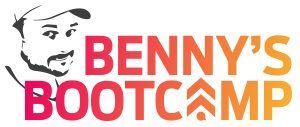 Get 75% off language hacking with Benny’s Bootcamp and the Fluent in 3 Months Black Friday Collection 2018.
Get 75% off language hacking with Benny’s Bootcamp and the Fluent in 3 Months Black Friday Collection 2018.My biggest ever Black Friday deal!
The Fluent in 3 Months Black Friday Collection 2018 includes:
Benny’s Bootcamp LIVE -- My New 3 Month Language Hacker’s Program (value: $297)
My all new 3 month language hacker’s bootcamp with LIVE weekly webinars. Benny’s Bootcamp is my biggest and most in-depth video course for language learners – and you can join to learn any language.
Plus Black Friday bonuses: LIVE Q&A sessions ($97 value) and Travel Hacking bonus modules ($77 value).
Conversation Countdown - Your First Conversation in 7 Days (value: $97)
Conversation Countdown is the perfect launchpad for Benny’s Bootcamp. With this 7-day video course, you’ll have your first conversation with a native speaker in just one week – even if you’re a complete beginner!
Fluent in 3 Months Premium – Lifetime Membership (value: $97)
Fluent in 3 Months Premium is my classic guide to learning a language fast. It’s packed to bursting with resources you’ll find essential on your 3 month mission with Benny’s Bootcamp.
My Complete Easy Language Package (value $234)
A pack of 6 guides for hacking Spanish, French, German, Italian, English and Chinese.
Total value: $899
Black Friday Deal Price: $197
Get Benny’s Bootcamp and The Fluent in 3 Months Black Friday Collection 2018 here
Innovative Language – Podcasts for 34 Languages – 51% off
This is my favourite language learning podcast and audio course, available in an incredible 34 languages.
You start by picking your level, and the audio course adjusts to you, getting slightly more complex as you progress.
Click the podcast website below of your target language, and enjoy! These discount links will get you 51% off the normal price for 1 or 2 year subscriptions, for any language. This covers Premium AND Premium+ subscriptions.
Click the language you want below to find out more:
Most popular on Innovative Language:
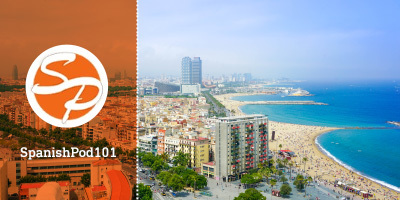





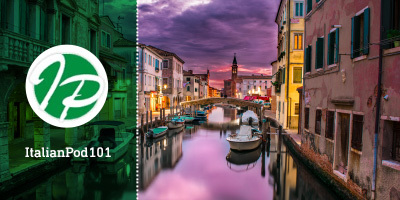

Most popular on Innovative Language:


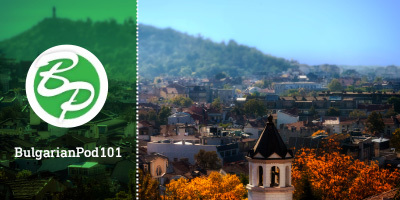















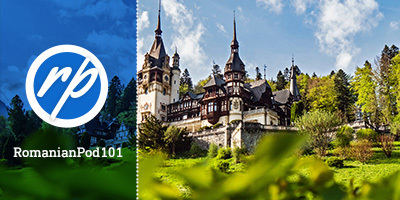




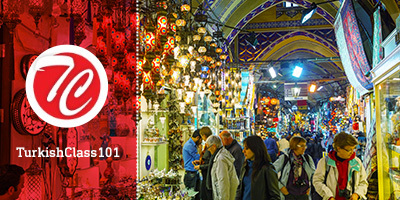

MosaLingua – Lifetime Fluency Bundle – 96% Off
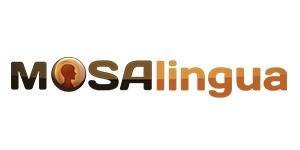 The MOSA Learning ® method is based on principles of cognitive science, so you can learn a new language faster and smarter. Plus it helps you focus on the aspects of your target language that matter most to you. It has 6 million users worldwide, and Fi3M’s Holly Keenan found “a lot to love” when she tried out MosaLingua.
The MOSA Learning ® method is based on principles of cognitive science, so you can learn a new language faster and smarter. Plus it helps you focus on the aspects of your target language that matter most to you. It has 6 million users worldwide, and Fi3M’s Holly Keenan found “a lot to love” when she tried out MosaLingua.And here’s what another reviewer said:
“I have tried many other forms of learning and other apps in the attempt to learn [a new language] but this is honestly the one which has been successful for me. I am delighted with my progress and learning with this app is enjoyable and effective.”
With the MosaLingua Fluency Bundle, you can learn a new language in just 10 minutes a day. Here’s what you’ll get inside:
LIFETIME Subscription to MosaLingua Web (value $2,000)
MosaTraining: How to Learn Any Language – lifetime membership (value $130)
Lifetime access to the MosaSeries: The Man with No Name – Launching 2019 (value $590)
With the MosaLingua Fluency Bundle, you get all of the above for five languages – Spanish, French, German, Italian and Portuguese.
The total value of all these courses and memberships is $2,720, but this week only you can pick up everything for a 96% discount!
Get the MosaLingua Fluency Bundle Here
Mondly – Lifetime Membership for ALL 33 Languages – 85% Off
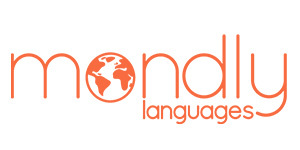 Mondly is one of the world’s favourite language learning apps, with 35 million users worldwide. It’s also highly rated, with 800,000+ reviews, giving an average rating of 4.7 out of 5 in the Google Play store and 4.6 out of 5 the iTunes App store.
Mondly is one of the world’s favourite language learning apps, with 35 million users worldwide. It’s also highly rated, with 800,000+ reviews, giving an average rating of 4.7 out of 5 in the Google Play store and 4.6 out of 5 the iTunes App store.Bloomberg has called Mondly "the most fulsome app-learning experience".
A unique part of Mondly is the chatbot feature. It feels really natural, just like you're hanging out with a native speaker – ideal for practising your conversation skills when a language partner isn't available.
I’ve negotiated a lifetime membership deal that gives you lifetime access to all 33 *Mondly* language courses for under $150.
Lifetime membership usually costs $999, so that’s a saving of 85%!
Magnetic Memory Method – the Language of Memory Package – 70% Off
 Anthony Metivier of the Magnetic Memory Method has put together a special Language of Memory package just for Fluent in 3 Months readers
Anthony Metivier of the Magnetic Memory Method has put together a special Language of Memory package just for Fluent in 3 Months readersThe Language of Memory package includes the courses:
The Magnetic Memory Method Masterplan
How to Learn & Memorize the Vocabulary of any Language
Speak From Memory
How to Memorize Names and Faces
Implementation Bootcamp
Plus lifetime updates for all the above courses.
This is a unique package for Black Friday, with a 70% discount.
Click here to get 70% off the Language of Memory package from the Magnetic Memory Method
Mimic Method – Elemental Sounds Power Pack for 10 Languages – 95% Off
Learn your target language faster by mastering the sound systems of ten languages. With this Elemental Sounds Power Pack, you'll learn to "see the matrix" of all human sounds, making you a better language learner.
Mimic Method – Elemental Sounds French
Mimic Method – Elemental Sounds German
Mimic Method – Elemental Sounds Russian
Mimic Method – Elemental Sounds Brazilian Portuguese
Mimic Method – Elemental Sounds European Portuguese
Mimic Method – Elemental Sounds English
Mimic Method – Elemental Sounds Chinese
Mimic Method – Elemental Sounds Italian
Mimic Method – Elemental Sounds Japanese
– and they’re all 75% off this week.
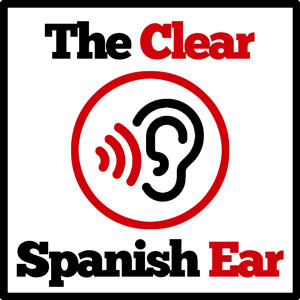 Spanish learners: We’ve also got 75% off the new Mimic Method Spanish course Clear Spanish Ear. Improve your Spanish listening skills and
get 75% off *Clear Spanish Ear* here
.
Spanish learners: We’ve also got 75% off the new Mimic Method Spanish course Clear Spanish Ear. Improve your Spanish listening skills and
get 75% off *Clear Spanish Ear* here
.Courage to Speak from Fluent in 3 Months – 34% Off
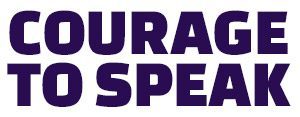 Courage to Speak with Shannon Kennedy will help you build your confidence to connect with people all around the world through your language learning. You’ll learn the courage to speak your new language, in real conversations.
Courage to Speak with Shannon Kennedy will help you build your confidence to connect with people all around the world through your language learning. You’ll learn the courage to speak your new language, in real conversations.A student who recently finished this course told us: "I just want to say I LOVE this course! So supportive and encouraging. You have helped me go from thinking it's all impossible to, actually it IS possible. Thank you so much." – Maria V
Get 34% Off Courage to Speak here
The Staircase Method – Learn with Benny’s French Teacher – 85% Off
 Léa, who was my French teacher for several years, has put together a new way of learning French with stories, called the Staircase Method. With each step you climb on the Staircase, you're pulled deeper into a story. The more absorbed you get in the story, the more French you learn.
Léa, who was my French teacher for several years, has put together a new way of learning French with stories, called the Staircase Method. With each step you climb on the Staircase, you're pulled deeper into a story. The more absorbed you get in the story, the more French you learn.The Staircase Method is usually $11 per month, but with this exclusive deal you get lifetime access to all Staircase courses for a one time fee using the coupon code BENNYPASS.
The deal is equivalent to an 85% discount on a 5-year subscription. But this subscription lasts for life!
Climb the Staircase and learn French with Léa, my French tutor.
Get exclusive lifetime membership to the Staircase Method here
Don’t forget to use the coupon code BENNYPASS.
Black Friday Deals for Your Target Language
This blog post would be way too long if I collected all the deals I've found in one place!
So I've put together individual Black Friday deal pages for each language...
Click the language you want to see deals for:
Most Popular Languages
Spanish
French
German
Chinese
Japanese
Korean
Russian
All Languages with Deals Available
Afrikaans
Arabic
Brazilian Portuguese
Bulgarian
Cantonese
Chinese
Croatian
Czech
Danish
Dutch
English
Farsi
Filipino
Finnish
French
German
Greek
Hebrew
Hindi
Hungarian
Indonesian
Italian
Japanese
Korean
Mandarin
Norwegian
Persian
Polish
Portuguese
Romanian
Russian
Spanish
Swahili
Swedish
Tagalog
Thai
Turkish
Ukrainian
Urdu
Happy language learning, I hope you enjoy these deals!

 Benny Lewis,
Benny Lewis,
founder, Fluent in 3 Months
The post Black Friday Mega-Deals for Language Learners 2018! appeared first on Fluent in 3 months - Language Hacking and Travel Tips.




November 17, 2018
Magnetic Memory Method: An In-Depth Review from a Language Learner

When I joined the course I was interested, but a little skeptical of the big promise to make new words “magnetic”. Could it really be that easy to learn vocabulary as a language learner?
If you’re anything like me, as a lifelong learner, you’ve probably heard of at least one technique for improving your memory. Mnemonic devices, memory hooks, memory aids, memory prompts. The memory palace. Fluent in 3 Months (Fi3M) founder Benny has written about them several times on the Fi3M blog. They’re a proven way to remember vocabulary, names, or other lists of information that need to be memorized.
I have researched memory techniques on a few occasions during my time working at Fi3M. In theory, I knew how they worked and what made them useful for language learners.
And yet I’d never gotten around to seriously trying mnemonics for myself in my language learning. It seemed to me that the time I’d spend creating a memory palace would be better spent on my target language. I knew that to create a memory palace, I’d need to come up with a new, creative, memorable image for each and every new word I wanted to remember. Honestly, it seemed a little tedious.
Still, I knew deep down I wasn’t giving mnemonics a real chance. When I got the opportunity to review the Magnetic Memory Method for Fi3M, I decided to go for it, once and for all, to see if it would work for me.
I’m very glad I did. For one thing, it helped me memorize a long list of Spanish vocab that I had been putting off for a long time. For another, I learned that creating my own memory palace isn’t as hard as I thought.
What is the Magnetic Memory Method?
The Magnetic Memory Method is a set of video courses created by Anthony Metivier. It teaches the fundamentals of memory palaces and mnemonic devices for memorizing different types of information. In fact, Anthony has even written an introductory article about memory palaces for Fi3M.
There are several courses available as a part of the Magnetic Memory Method. The Masterplan course is the main introduction to the memory techniques Anthony teaches, including how to create a memory palace and how to think of and store memorable imagery (mnemonics) in your palace. If you had to pick just one Magnetic Memory Method course to do, this is it.
Other courses available include:
How to remember your dreams
How to learn and memorize the vocabulary of any language
How to memorize names and faces
How to learn and memorize poetry
How to memorize math, numbers, simple arithmetic and equations
How to memorize a deck of cards
Since Fi3M is a language-learning blog, I followed two courses for this review: the Masterplan, and How to Memorize the Vocabulary of Any Language.
To test out the techniques for myself, I picked a moderate goal that I had been meaning to do for a while: memorize the essential vocabulary from the Monterrey driver’s handbook so I could complete the written and practical exams for a driver’s licence here in Mexico, where I live.
Memorizing this type of information seemed perfectly suited to the Magnetic Memory Method. Plus, the driving exam would be an excellent way to test out how well I learned this vocab.
Getting Started with the Magnetic Memory Method
Getting started is as easy as selecting a course to register for at the bottom of the Magnetic Memory Method homepage under “Our Products”. You can choose an individual course or select “Masterclass” to get access to all of them.
Even if you’re totally familiar with mnemonic devices and memory palaces, I recommend starting at the beginning of whichever course you choose. That’s where Anthony introduces the concepts, guidelines and terminology he’ll use throughout the course. Some of these are unique to the Magnetic Memory Method and you likely won’t have heard of them before.
While each Magnetic Memory Method course is primarily a series of videos, it’s not a “passive” course. You’re expected to read the supplemental material, fill in the worksheets and do the exercises required to set up your memory palace. Don’t skip over this part. It’s pretty much the heart of the Magnetic Memory Method, and the only way to keep track of your memory palaces.
It does take some effort, but Anthony provides detailed, very useful tips for how best to create your memory palace, traverse it, and think up memorable images to fill it with. There are quite a few suggestions that I wouldn’t have thought of if I had been endeavouring to go through this process alone.
Aside from that, you’re quite free in how you complete a course. You can watch the videos, complete the exercises and read the accompanying ebooks at your own pace. The videos play without issue on both desktop and mobile so you can watch them when convenient. You can follow more than one course at a time if you want, or complete them in order.
My Experience with the Magnetic Memory Method
Since I only had a little experience with mnemonic devices and no experience with memory palaces, I started at the beginning of the Masterplan course.

How I Created My First Memory Palace
The Masterplan walked me through the process of identifying potential memory palaces and the stations within them.
Unlike the famous mind palace from BBC’s Sherlock, a good memory palace should be a real place, such as your house, school, workplace or other building that you know well. As for the stations inside where you’ll “store” the information you want to memorize, it’s all up to you to design them however you’d like. The Masterplan provides many useful guidelines for how best to choose stations, and especially how to go about it if you’re still a beginner to memory palaces.
In general, a station can be an entire room in your palace or something smaller like a piece of furniture. For more advanced learners, stations can be even smaller, such as the individual items on a shelf. To memorize information like a vocab list, you invent a memorable image or action that links the word to its English translation, and then you mentally place it at a station in your palace.
This is a step beyond the simple mnemonics I had previously learned. Instead of just linking a word to its meaning using some funny, exaggerated, cartoonishly violent or otherwise memorable image, you then also link the image to a location in your memory palace that you know very well; a location you can just close your eyes and instantly visualize. (By the way, if you find that you’re unable to visually imagine things in your mind, this course has advice for you, too.)
I used what I learned in the Masterplan to identify 26 potential memory palaces; one for each letter of the alphabet.
My memory project for this review was to learn driving-related Spanish vocab from the Monterrey driver’s handbook. I read the handbook and identified about 80 words that I didn’t already know. Then, I eliminated the words that I was able to easily recall the next day. This left a list of 58 words that needed more effort to memorize.
I wanted to put all of my words in one memory palace without having to pack them too “densely” since I’m still a beginner. I chose the largest house I had ever lived in so there would be plenty of room.
Here’s the map, with my route and stations shared:

(You don’t have to get this detailed when drawing your own memory palace. I just wanted it to be as clear as possible for this review.)
Storing Vocab in my Memory Palace
Now it’s time to fill the palace with memorable imagery for each vocab word in my list. There is plenty of information in the Masterplan course for making your mnemonics memorable. But to make sure I did this effectively for my Spanish vocab, I followed the course How to Learn and Memorize the Vocabulary of Any Language.
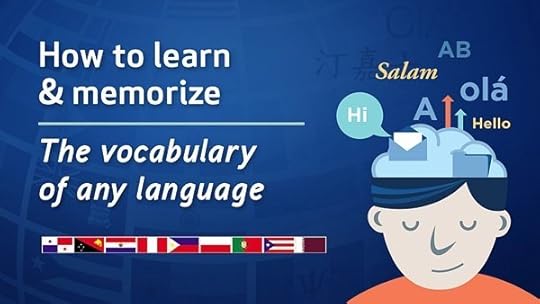
Filling up the memory palace is straightforward. For each word on my list, I did the following:
Closed my eyes and imagined a way to link the Spanish word to a similar-sounding English word.
Linked the English word to a memorable character or person performing some sort of action that conveys the meaning of the Spanish word.
Imagined that action taking place at one of the stations in my memory palace.
Here’s an example:
One of the words I learned was silbato (“whistle”, as in a traffic officer’s whistle). I linked this word to two English words: Sylvester the cat from Looney Tunes, and a baseball bat. I created a vivid scene in my mind of Sylvester sneaking up on a sleeping Tweety Bird, planning to hit him with the bat. Looney Tunes’ famous suspenseful “tiptoe” music is playing in the background. Just before he reaches Tweety, a kettle of water starts boiling, whistling absurdly loudly. So Sylvester frantically bashes the kettle with the bat to silence it and not wake up Tweety.
The final step is to place the scene somewhere in my memory palace. I closed my eyes and visualized it taking place on my bed (station 16 in my memory palace). Tweety is sleeping on my pillow and Sylvester sneaks up on him from the end of the bed, when suddenly the kettle starts whistling right beside him.
Imagining it this way really worked. Now, whenever I hear the word silbato or “whistle”, I just picture my bed and instantly this scene pops into my mind and I remember the translation in a fraction of a second.
Getting Through the Tough Parts to Build Memorable Imagery
Not every word was so easy to relate to an English word. I noticed this especially with words containing the Spanish j sound. The word espejo (“mirror”) was tough to invent a good mnemonic for. But later in the course, there is a section covering more advanced topics, including this type of scenario. My final mnemonic linked the word espejo to the English word “spackle”, and I used a technique from the course to mentally remove the “L” sound in the mnemonic so I don’t forget that espejo has no L.
Full disclosure: I found the mnemonic part quite tough at first. I kept thinking of images that were too forgettable. As I said at the top of this review, the need to think up a separate memorable image or action for every single vocab word was a big reason why I didn’t try this technique seriously in the past. It seemed like too much effort, even if it really works.
It truly does get easier though. By the end of my vocab list, I could think up a mnemonic for a word, run through it several times in my mind to make it vivid, and mentally store it in my palace all in under a minute.
The Magnetic Memory Method course can’t think up your mnemonics for you, but it does provide a few examples to illustrate the principles. It also shows you a great formula to use in your own mnemonics, as well as tips and guidelines for conceiving the best possible images and actions to link to your target vocab.
Later in the Memorizing Vocabulary course, the techniques go beyond just memory palaces, stations and mnemonics for vocab. You learn how to memorize spelling and grammar in your target language, and even get tips on learning non-Latin alphabets. I didn’t apply these techniques to my own project since Spanish spelling is phonetic and grammar wasn’t part of it. But I’ll have a use for a lot of these tips when I continue with my Thai studies in the future. Thai spelling is about as weird as English!
The Easiest Part: Recall
My memory palace was set up and I had written down a short prompt for each station to describe the word stored there. Here are my prompts for my first five stations:

(I’d show you my full list, but some of them are awfully strange! But they’re memorable, which is all that matters.)
Now it was just a question of expanding on each prompt by adding vivid details and imagining exaggerated features like colour and size. Then, I visualized each one in my mind and “stored” it at the right station in my memory palace for retrieval when needed.
I was honestly amazed at how simple it was. Mnemonic devices truly do make it easy to remember information. Combined with the spatial cues of a memory palace, it’s downright trivial.
My routine for learning my mnemonics and storing them in the palace was pretty straightforward:
For several nights in a row, I would take my notebook of mnemonics to bed (I found this environment helpful for concentrating; the course mentions that being relaxed is important for memorizing).
For 15-20 minutes, I would go through a few stations, one at a time, and close my eyes to really visualize the action or character in my mind and link it both to the station and the word.
When I shut the lights out, I would close my eyes and tour those stations in my memory palace one last time to recap the words I had learned.
Upon waking the next morning, I would “tour” the stations again to see if I could still remember what I had studied the night before. I always could, without exception.
That evening before bed, I’d start by mentally touring the memory palace up to the most recent station, and then I’d repeat the previous steps to add new words before bed.
I learned about 14 words a day this way, with almost no need to review at regular intervals throughout the day to keep it fresh in my mind, as I need to do with SRS. I might have been able to learn more words per day, but I only budgeted about 15 minutes per day before bed.
One of the biggest surprises I had after a few days of learning vocab was realizing that I didn’t need to visualize the entire sequence of events of each mnemonic in order to arrive at the Spanish word and its meaning. It was very surprising. I could just think of a station and the word would pop into my head.
For example, I could just imagine the bed in the master bedroom and the word ganado (“livestock”) would pop into my head. I didn’t have to think, “OK, the bed is where I imagined a big spotted cow holding a spoon and trying to eat a giant bowl of natto beans. It hates natto beans, so with each bite, it shouts ‘Gah! Natto!’, therefore ganado = ‘livestock’.”
So yes, while it takes some practice and mental effort to set up and fill your memory palace, the actual recall of information is trivial and extremely fast. In my opinion, this makes it more reliable and less of an effort overall than flashcards, even though the “startup cost” of creating palaces and stations is higher.
Magnetic Memory Method: The Good
There is a lot to love about the Magnetic Memory Method.
Unlike learning with flashcards, you can review the words in your memory palace without any materials in front of you. No matter where you are, you can just imagine your memory palace and mentally walk through the rooms (or fast-forward to a particular room) to see the words you’ve left there.
Your retention is very long. When I was first memorizing my list, I could go through my memory palace mentally once a day (first thing in the morning) and remember everything I had learned the night before. When I finished memorizing my entire list of 58 words (in just four days), I left it for several days before reviewing again, and I still remembered everything. It was actually pretty shocking how easily I retained 58 random Spanish words from the driver’s handbook.
You can learn more in a shorter amount of time than with flashcards. At least in my experience. Back when I used flashcards seriously, I found that about 10 words per day was a manageable amount, and it took many days of repetition before they stuck. I memorized about 14 words a day with Magnetic Memory and remembered them with less repetition.
The course is more than just how to memorize lists of words. There is a lot of other language advice in there, too. For example, there is a section in one of the Masterplan ebooks entitled “How Do I Find New Words That Will Make Me Feel Like Myself In A New Language?”
I also found the course well-structured and systematic. The concepts are introduced one at a time and are fully explained before moving on to the next. I never felt overwhelmed while following along with either course.
The Magnetic Memory Method is particularly well-suited to specific memorization projects or goals. For language learners, this could be a list of vocabulary, exceptions to grammar rules, irregular verbs or spellings…anything about the language that you have trouble memorizing by rote. Anthony even says you can use this technique to learn the vocab from a foreign language dictionary.
Finally, Anthony himself seems genuinely invested in the success of users of his courses. There is a generous refund policy and an open invitation to email Anthony Metivier at any time for help with the courses.
Magnetic Memory Method: What Could be Better
While I found the Magnetic Memory Method techniques useful and effective, I did notice a few annoyances with the setup and format of the course itself that made for a less-than-perfect user experience.
Each course is a static set of video modules with accompanying worksheets and reading material. There isn’t a way to track your progress as you complete the course, such as letting you mark videos as watched or mark modules as complete. If you take a break from the course for a few days, you may forget where you left off when you come back to it later. Having a checkbox beside each video where you can mark it as watched and a personal dashboard that lists your watched and unwatched videos so you can easily find and click on the next video would be a very useful feature.
The reading material that accompanies some of the lessons is not mobile friendly. It’s in PDF documents, meaning it’s formatted exactly the same no matter how small the screen is. I would have to pinch to zoom and then pan from left to right to read each line. Turning my phone to landscape mode helped, but only a little. So I mostly stuck to reading on my computer. However, I understand Anthony is currently working on a new version of the website, and the ebooks will then be available in other more versatile formats.
The ebooks themselves could use a bit of polishing to improve their readability. For instance, the hyperlinks inside many of them are plaintext and can’t be clicked. You have to manually copy and paste them into your address bar. But you can’t copy and paste from a PDF on a mobile browser.
There are also some typos in the ebooks, both in spelling and the editing of sentences. You can gloss over these errors and not miss out on the overall point, but I did find it distracting sometimes to have to reread sentences that I thought I had misread but were actually written incorrectly.
Finally, there are a couple of technical issues with the website. These include the occasional broken or incorrect hyperlink on some pages and very quiet audio on some videos. These are issues that will hopefully be resolved in the new version of the course.
Magnetic Memory Method Review: Conclusion
The Magnetic Memory Method is a very effective method for memorizing vocabulary in your target language. Vocab is usually the biggest limitation for beginners in a language. Verb tenses, good accent and proper syntax won’t get you very far if you don’t know many words. So while Magnetic Memory shouldn’t be your only language-learning method, I definitely recommend it for amassing large amounts of vocabulary in a short time. You can use it whether you’re a beginner or an advanced speaker.
This was my first real foray into the world of mnemonics and memory palaces. I expected Magnetic Memory to work, but perhaps not quite so well. It’s been weeks since I memorized my 58 vocab words and I still remember them all with almost no effort, and no need for frequent reviews (I mentally traverse my palace about every 2-3 days, which is more than often enough). I can say pretty confidently they’re in my long-term memory.
I plan to continue with these techniques as I advance in Spanish (and maintain my Thai skills). I subscribed to News in Slow Spanish, which will give me lots of new vocabulary to memorize. I may also go beyond vocab lists and try to memorize Spanish songs and lines from my favourite Spanish TV shows. I’m even going to see if I can apply the Magnetic Memory Method to other topics, such as learning the Swift programming language, which I use for doing iOS development in my spare time.
Whatever you need to memorize, make some room in your routine to give Magnetic Memory a try.
My “Test” Results
The reason I memorized driving-related vocab was to get a Mexican driver’s licence. I booked my appointment for the test in person and all seemed well… but when I turned up at the licence centre a few weeks later, I was told I’m not allowed to take the driving test! I’m still only a temporary resident here in Mexico and won’t be eligible for a licence for another six months. I was super disappointed!
That said, the vocab I learned is still essential for me as a car owner in Mexico, with or without a local driver’s licence. So finally taking the time to memorize it was well worth my time. Plus, the vocab is in my long-term memory, so I’m pretty sure I’ll remember it even six months from now.
Still, I wanted to find some way to check my knowledge. So I tested myself with this online driving quiz. I’m pretty pleased with my result: 14/16!

And being compared to Erik Estrada in his younger years is a nice bonus.



